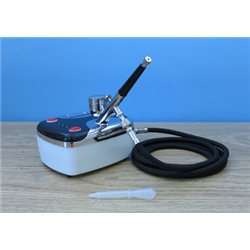In model railways, a point motor is a type of mechanism that is used to control the position of a turnout, or switch,...
No products
Product successfully added to your shopping cart
There are 0 items in your cart. There is 1 item in your cart.
Search Tips
Are there any problems with applying cellulose-based paints to injection moulded plastic model kits ?
When it comes to painting injection moulded plastic model kits, there are a few things to consider. While cellulose-based paints can be used on plastic models, there are some potential problems that could be encountered.
Firstly, cellulose-based paints contain solvents that can be quite aggressive and can potentially damage the plastic surface of a model kit. This is especially true for older kits that may have a more fragile plastic composition. It is always a good idea to test the paint on a small, inconspicuous area of the model or scrap material before applying it to the entire surface.
Secondly, cellulose-based paints tend to have a strong odour and can release harmful fumes. It is important to work in a well-ventilated area and wear a respirator mask for protection from the fumes. Additionally, it is advisable that any modeller with respiratory issues or sensitivities to strong odours should avoid using cellulose-based paints or thinners.
Lastly, cellulose-based paints can take longer to dry compared to other types of paints. This can be a disadvantage for modellers looking for a quick drying time. However, the longer drying time can also allow for better levelling and smoother finishes.
For modellers considering the use cellulose-based paints on a plastic model kit, it is recommended that they follow these steps:
- Clean the model kit thoroughly to remove any dust, grease, or other contaminants.
- Apply a primer specifically designed for plastic models to create a smooth and even surface for the paint.
- Prepare the working environment properly by ensuring good ventilation before, during and after use.
- For additional protection, modellers should wear a respiratory mask when spraying or brushing cellulose-based paints.
- Apply thin coats of cellulose-based paint, allowing each coat to dry completely before applying the next one.
- Use a good quality brush or airbrush for a smooth and even application of the paint.
- Apply a clear coat or varnish to protect the paint and give it a glossy or matte finish, depending on individual preference.
Remember, practice makes perfect, so don't be discouraged by any challenges encountered along the way. Each paint type has its own pros and cons, so it is useful to experiment first to see what works best for a particular task.
Click here to receive the tips weekly in your mailbox. You can unsubscribe at any time.










